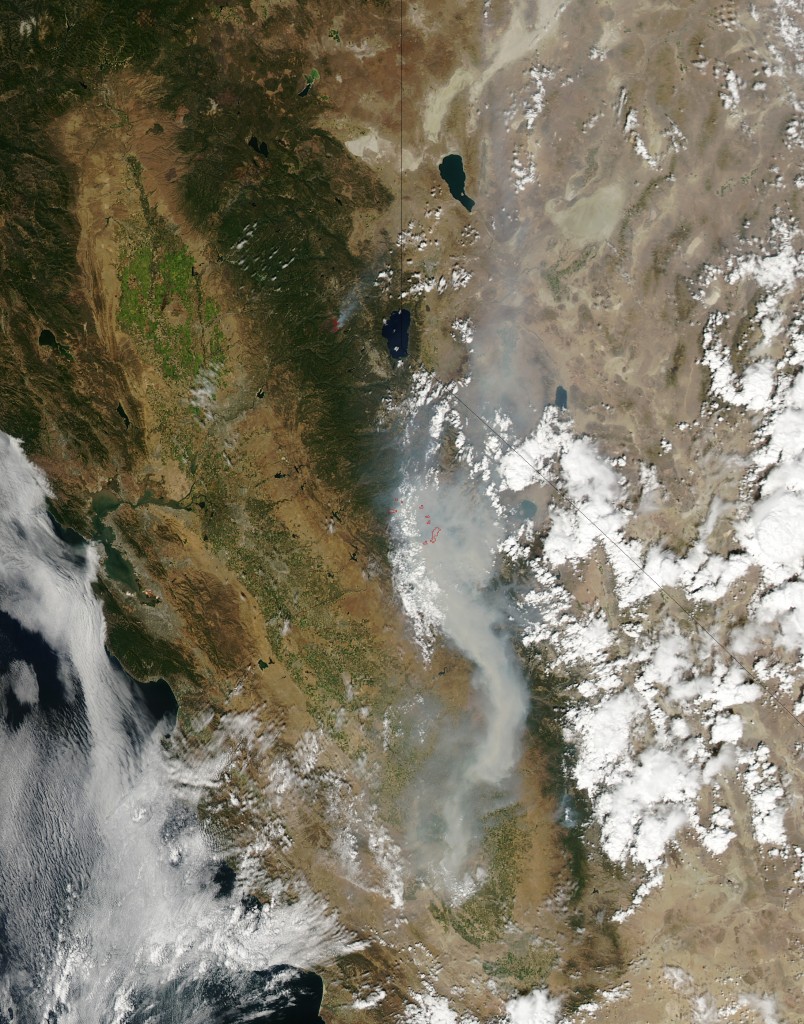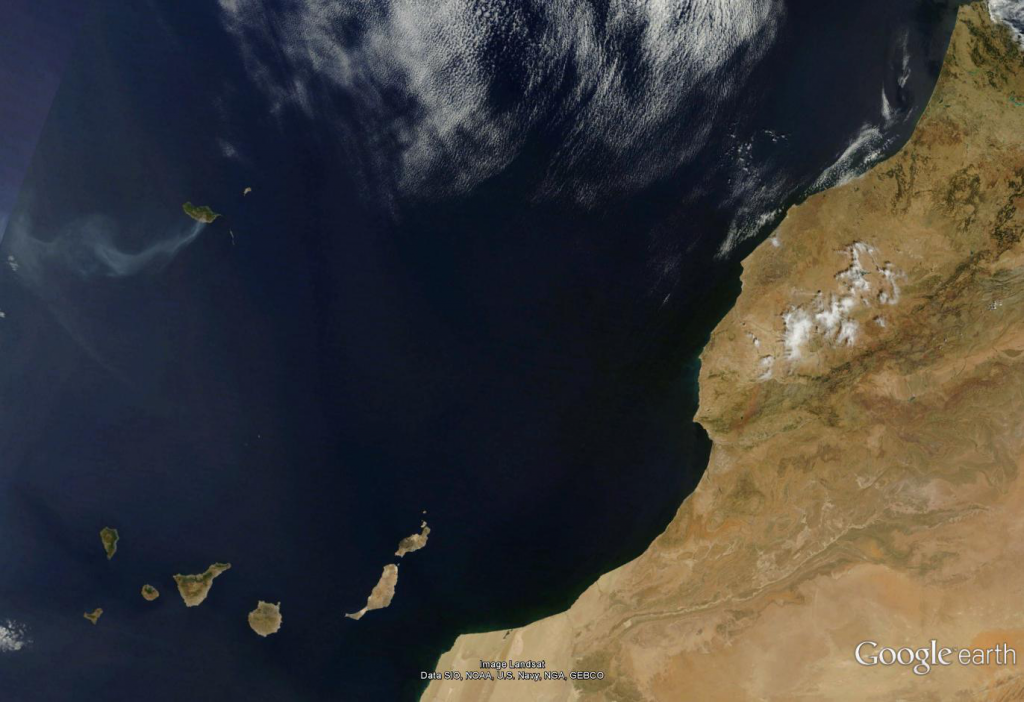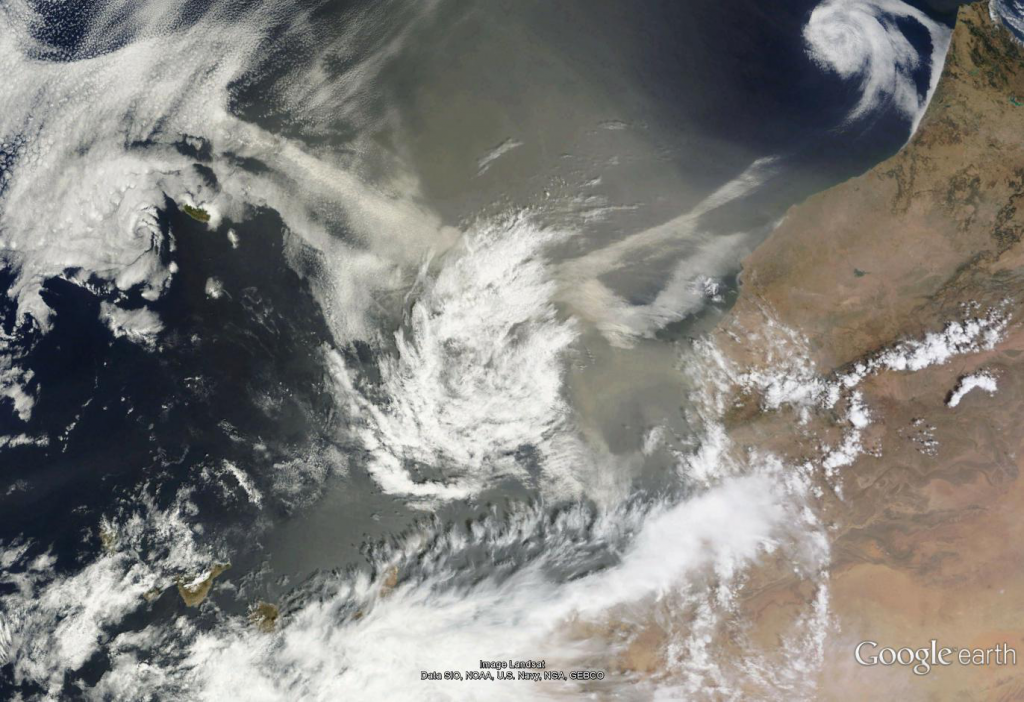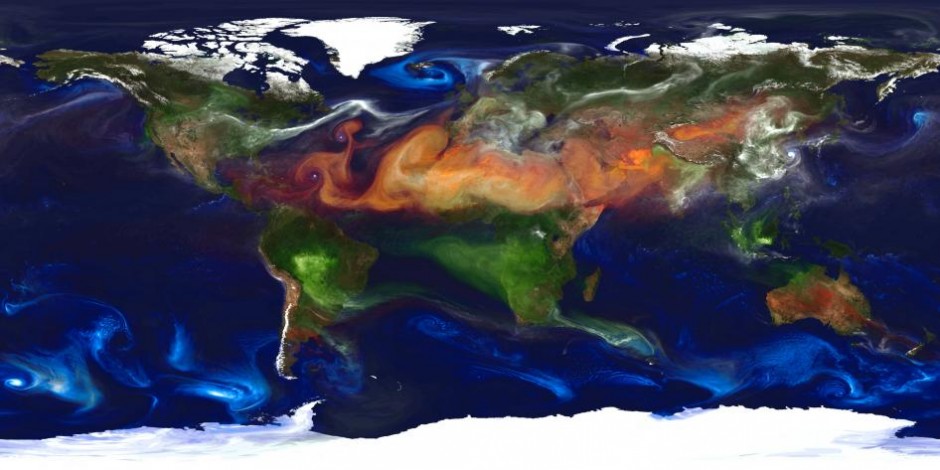The past summer has seen a great deal of media coverage of fires burning across the globe. When I consider what to write about for the blog, it has often been difficult to avoid commenting on yet another instance of a fire burning somewhere. This has been especially difficult given my current research project investigates biomass burning aerosol from deforestation and agricultural fires in Brazil. Fire and smoke is often dangerous and can have devastating consequences, however, the imagery available via satellites, scientific missions and the media is often breathtaking and they are fascinating for someone who thinks a lot about how these things evolve.
The huge number of man-made fires on the Indonesian island of Sumatra earlier this summer highlighted the impact of fires on air quality and human health, as vast plumes of smoke shrouded Singapore in a thick record-breaking haze. Another batch of fires were burning there in the August 22-27 period, although the wind conditions were more favourable for Singapore on this occasion. Europe has also had its share of fires, with Portugal being particularly affected in late August by wildfires and Russia saw extensive man-made agricultural fires in the Spring. South Wales has also seen several grass fires, including the Glyncorrwg fire in June, which I wrote about here. Australia is the latest region to hit the headlines, with the fire season igniting early around Sydney. South America and Southern Africa have also seen numerous fires that vastly outnumber those currently burning in the USA and Europe. I’m planning to write a separate post on these in due course.
Fire in the Taco Bell
The region that has garnered the most media attention is the USA, where numerous wild fires have burnt their way through many areas, furthering concerns around fire management and potential links with climate change. I’ve written previously about the impact of wild fires on Rocky Mountain National Park, which I saw first hand in July. The latest major event is the Rim Fire in the Sierra Nevada, which is currently 80% contained and is at present the largest fire in the 2013 season. The scale and impact of the fire has led to some incredible imagery of the fire and the extensive smoke plume emanating from it. The progression of the fire through a sequence of night-time images put together by the NASA Earth Observatory is quite incredible.

Image of the Rim Fire and the plume of smoke produced by it from 31st August 2013 from the Moderate Resolution Imaging Spectroradiometer (MODIS) instrument on the AQUA satellite. Image courtesy of the NASA Earth Observatory. Click on the image for a larger view.
One of the things that struck me when reading about the recent erroneous reporting of an ‘Indian Summer’ in the UK was the association of the term with smoky or hazy conditions in the USA. Apparently, the earliest known usage of the term dates to the 18th Century and the link with Native Americans may also have been directly related to the benefits of the hunting season occurring during such a hazy period. The potential major cause for such haziness, bearing in mind this is prior to large scale industrial combustion, may very well have been smoke from fires. This would fit in with the natural wildfire season in the USA or man-made burning to create/accentuate any hazy conditions by the Native Americans themselves. Fires have been with us throughout history, with some impressive research illustrating how the numbers of fires has changed over millennial time scales e.g. this paper by Tom Swetnam, which is covered by Science Daily here.
Intervention
The fires in the USA have led to several pieces on the role of wildfires in these environments, with scientists and journalists highlighting the potential ecological benefits of the Rim Fire in particular. Wildfires are not a new phenomenon, although there are concerns that there are a greater number of the large, intense fires like the Rim Fire, rather than a collection of smaller fires. This was noted in this piece by Brandon Keim for Wired:
Fire is a natural, inevitable phenomenon, and one to which western North American ecologies are well-adapted, and even require to sustain themselves. The new fires, though, fuelled by drought, a warming climate and forest mismanagement — in particular the buildup of small trees and shrubs caused by decades of fire suppression — may reach sizes and intensities too severe for existing ecosystems to withstand.
What is clear is that wildfires are a natural part of our landscape but there are genuine concerns about how human activities are changing their intensity and frequency.
The dual nature of fires in the Earth system is probably best summed up in this piece by John Fleck, where he interviews Tom Swetnam:
“Is fire good? Is fire bad?” Swetnam asked. “Yes. Both.”





